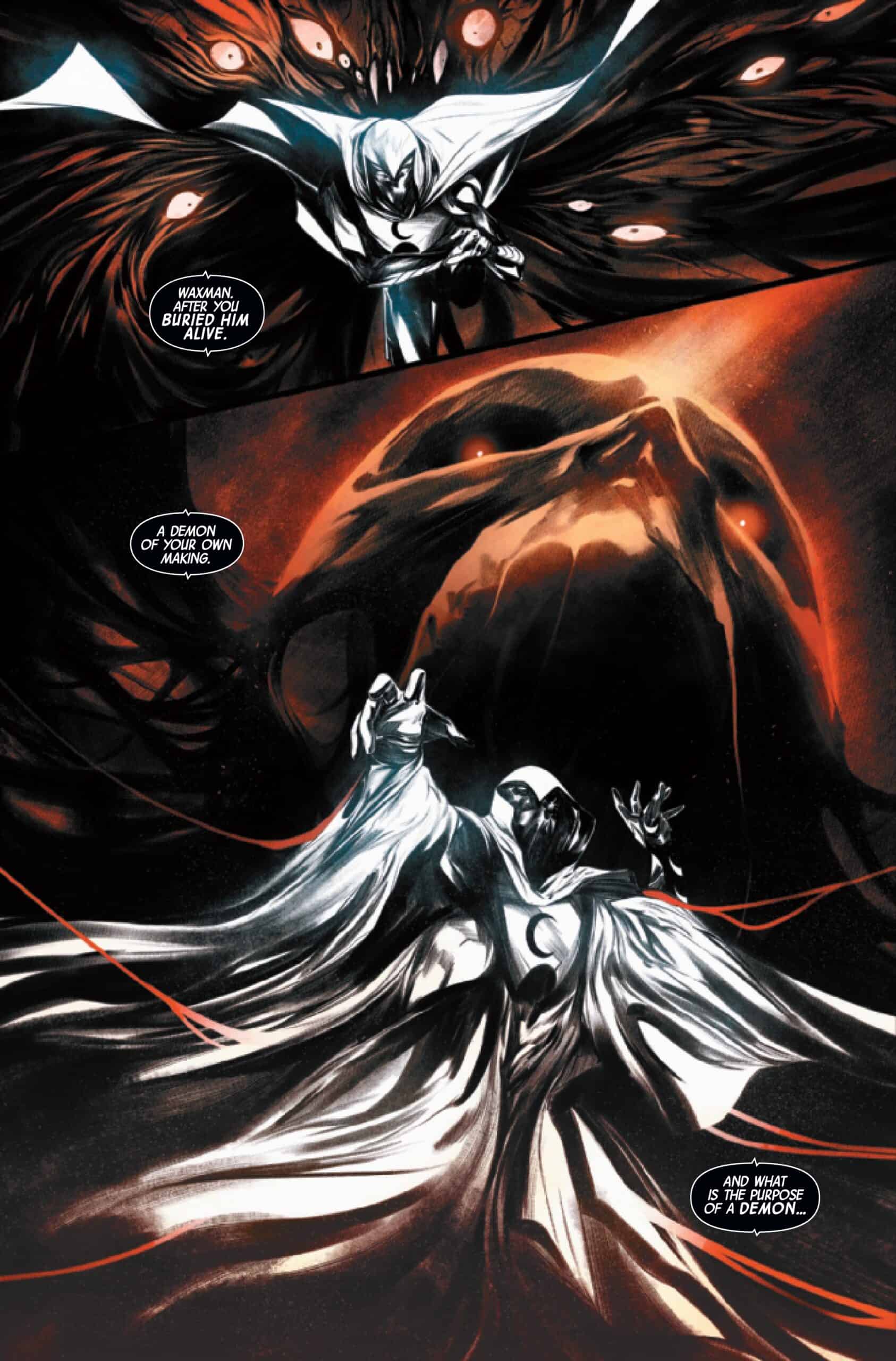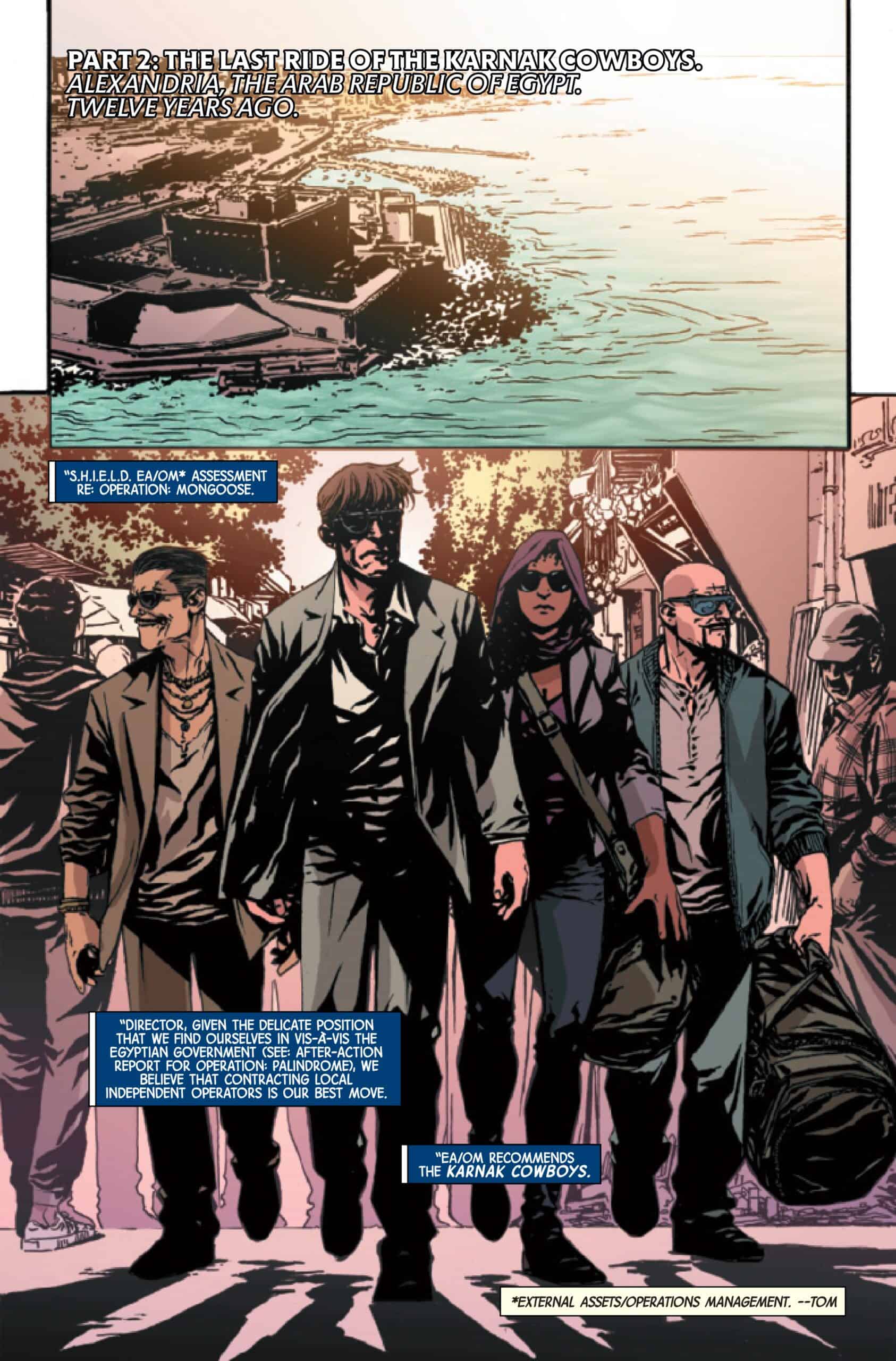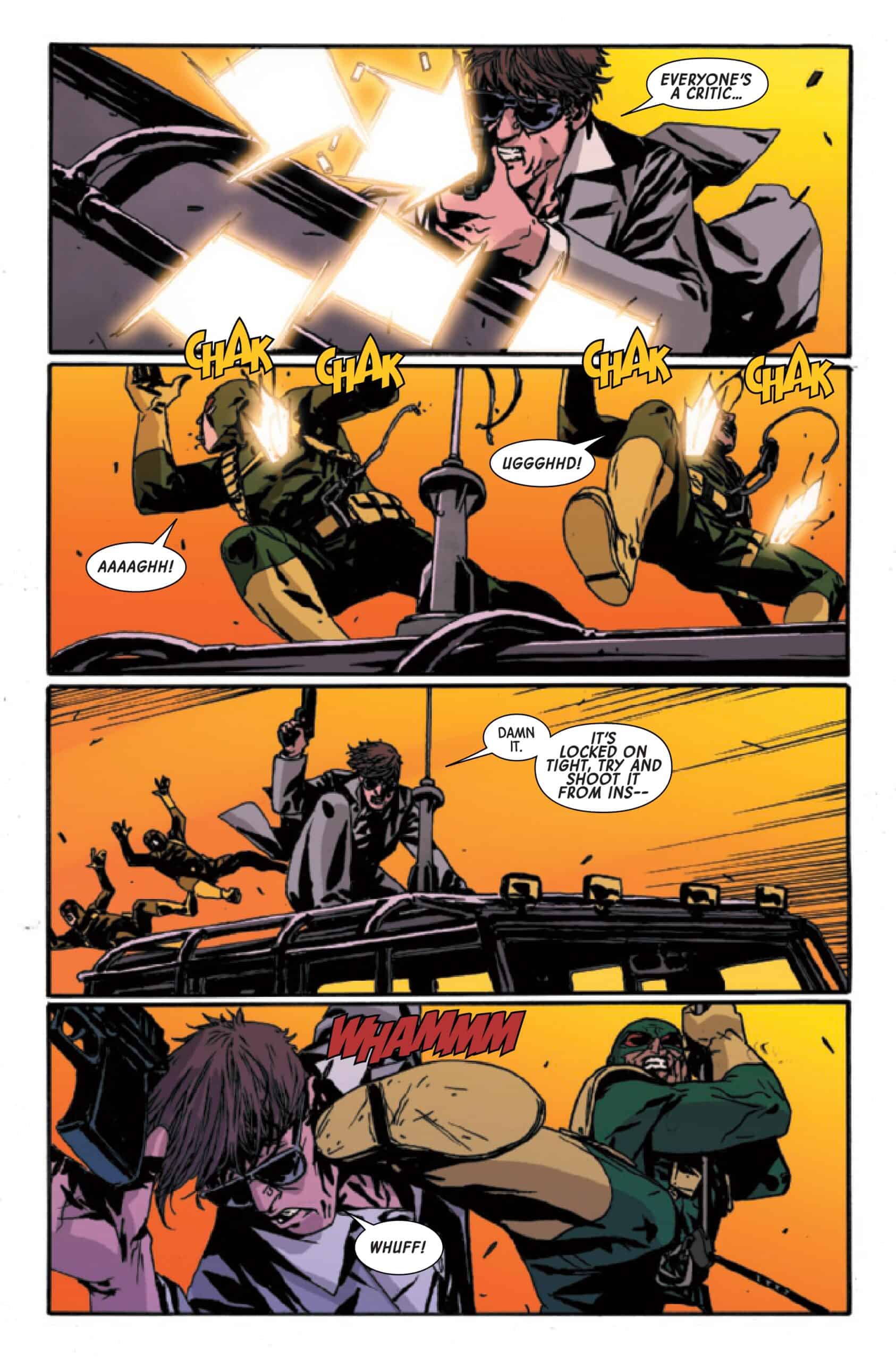Moon Knight #25

Recap
MOON KNIGHT’S PAST AND PRESENT COLLIDE, LEADING INTO HIS FIRST EVENT SERIES! The past comes back to bedevil Moon Knight as he pursues his latest enemy, someone once familiar and new. From grim New York nights to the blazing sun of Alexandria days, Moon Knight hunts for answers among the graves of Hart Island while haunted by the last mission of the Karnak Cowboys, a mercenary crew counting among its members Marc Spector, Jean-Paul Duchamp, Robert Plesko…and Layla El-Faouly. PLUS: A CLASSIC MOON KNIGHT STORY FROM THE PAST BY DOUG MOENCH AND BILL SIENKIEWICZ!
Review
It’s sometimes said that the one great equalizer is death, rendering kings and commoners, soldiers and saints, and everything in-between to the same fate in the end. The Danse Macabre depicts the concept, roughly translated as the Dance of Death, an allegorical genre that occurs across mediums. The work features various people marching together to the grave, usually the pope, child, worker, king, etc. It’s a fitting image to evoke in comics, thanks to the medium’s unique relationship with the notion of death.

Death is integral to many comic characters’ histories, sometimes inspiring the guilt or tragedy that spurs a hero or villain to take action. For a character like Marc Spector/Moon Knight, the death is both external and internal, as he courted the end of himself and Dr. Peter Alraune during an archaeological dig. Those deaths turned renowned archeologist and seasoned mercenary into equals, but the intervention of the Egyptian moon god twisted the balance.
Now, as the Fist of Khonshu, Spector operated with an imbalance to the rest of humanity, having an opportunity to return from death as long as he served the vengeful god. As Spector broke away from Khonshu, his and the other Fist, Hunter’s Moon, immortality went with them, returning the natural order. This means the dance of death can resume and alters the relationship that Spector has towards his views on it as it relates to his heroic work. It sets the stage as he is also reckoning with deaths in the past, the ones he’s caused and moved on from.
Moon Knight #25 – written by Jed MacKay with art by Partha Pratim, Alessandro Cappuccio, and Alessandro Vitti, colors from Rachelle Rosenberg, and lettering by VC’s Cory Petit – starts to tie together the pieces of the more extensive run, setting Moon Knight into a direct collision with the new Black Spectre. The villain has created the dark reflection of the Midnight Mission (aptly named the Chapel Perilous). Spectre allows for the downtrodden and criminals to ask favors of him, offering boons to the disaffected of New York.

Meanwhile, Moon Knight and his team (including the d-list villain, 8-Ball) are trying to uncover the identity of Spectre. They do down the list of former mask wearers; one still seems to be enjoying a dirt nap, and the other is in the Myrmidon Prison, sharing prison space with Zodiac. As Moon Knight continues his investigation, he closes the circle of suspects and pits Zodiac against the other inmates with an accusation of wearing the Spectre mask. After making noise, Zodiac gets his way out with the help of the new Spectre, setting up the endgame.
Between the present-day story, the issue interjects interludes from Marc Spector’s past between his days with the CIA and working with Bushman. Even then, his team (The Karnak Cowboys) is in place, this team featuring Jean-Paul Duchamp, Dr. Robert Plesko, and Layla El-Faouly making her comic debut. So far, only Layla has not made an appearance in the current run, and the recent death of Plesko has immediate relevance to the flashbacks. The Cowboys are on a mission to extract/kidnap Doctor Christopher Bousquet, a rogue scientist researching mind control through sounds. Hydra chases the Cowboys after they grab Bousquet, and the mission fails when they take back the doctor, along with causing the death of a Cowboy.
MacKay’s script weaves in and out of these times and plotlines gracefully, utilizing the framework of chapters that feel like moves in the Danse Macabre. The allegorical work reference in the issue title creates a syntax to under the flow between past and present, uniting Moon Knight through the concept of death, and at the heart of each artistic shift lies the notion of passing. MacKay has repeatedly shown his deep understanding and flexibility for Moon Knight lore throughout the last 25 (27, counting the annual and Devil’s Reign tie-in) issues. That sense is palpable on every page of the story and gives an epic quality to the oversized issue.

The story feels like the penultimate chapter in the longer run, signaling a shift in the focus and tone. The larger picture is in focus but manages to do so without invalidating the excitement of the done-in-one story. This stretch of stories feels like the perfect alchemy of serialized storytelling, blending the addictive nature of lingering plot threads with the satisfying conclusion that comes from the done-in-one installment. The pull of the narrative is the balance of these two styles and benefits from the extended run.
Going into the issue, the most worrying element would be the inclusion of Layla and her relationship to Marc’s backstory. MacKay immediately dispels those fears of corporate synergy, thanks to echoing the plots of the present day and the infusion of character from the first panel. Layla, in her brief appearance, feels like a natural element in the life and story of Marc Spector while feeling like a three-dimensional character. It’s a quick bit that includes her, with the promise of more in upcoming issues (and separate miniseries), but it makes an impression.
Much of that is infused thanks to Vitti’s art, which feels the most different from the other artwork of both the issue and larger run. Cappuccio and Federico Sabbatini, along with colorist Rachelle Rosenberg, have established a recognizable look to the series that draws from hyper-stylized, kinetic linework and interpretive shadows. Vitti brings a gritty, harsher look that aligns with the past and a setting closer to a Mission Impossible film than a superhero comic.

Vitti works in tighter, more rigid panels that give an organization to the page that mirrors the heist/mission plan that the story necessitates. This feeds that sense of Cowboys going on a stick-up. Even when the plot opens up into the desert during a chase sequence, Vitti keeps concise control of the layout and progression of the panels, staying away from the looser work seen in the other sections of the book.
In turn, Cappuccio and Pratim’s work feels more in line with one another through the use of the hallmarks of the run. Pratim’s linework is a bit cleaner and more realistic than Cappuccio, who lives through sharp angles and shadows. Pratim illustrates the section focused on Black Spectre and Zodiac in prison, giving a twisted sense of familiarity to what Cappuccio brings to Moon Knight’s plot. Seeing the subtle shifts in art feels like confusing two similar-sounding words but knowing one is incorrect.
In both the action and dialogue beats, Pratim veers to the center of the dichotomy established by the wildly different styles of the book. The panel layouts and linework channel the unique shapes and sizes found in a Cappuccio page while maintaining an order that feels right at home with the Vitti pages. Pratim is the perfect bridge to the styles, and incorporating both extremes ensures the book feels cohesive as it jumps between time and plot.

Cappuccio’s work has been well documented in previous reviews, but it feels like it has crystallized to a new level with this issue. The full pages of Moon Knight, drenched in shadow, and the frantic, sharp diagonal panels click right into place as they establish the heightened tone of the present day as the vigilante tracks down leads. Khonshu’s avatar and Cappuccio also cross another vehicle off his list, rendering a stunning speedboat ride with a deft sense of action even as the beat is used for some character work. The little flairs build to the bigger picture that Cappuccio has locked into his style, and it feels like the natural result of working as the primary artist on the run with MacKay.
The cohesion of the run is no more evident than in the book’s coloring, which Rosenberg has solidified to make one of the most definitive looks at Marvel. While the typical palettes, like bright neons and ethereal whites and blues, are on full display, a new color dimension comes into play thanks to the flashbacks. The desert setting in the flashback sequences gives Rosenberg a chance to play in a different time and setting, this time in the harsh browns and yellows that come with the desert. It’s a stark change that sets the section apart and aligns with the gritty spy angle that the story takes.

Final Thoughts
Moon Knight #25 dances with death but feels more alive than ever, thanks to the implicit trust between creators and readers as stories and styles converge to an endgame. The oversized, divided framework of the issue creates three distinct, cohesive elements that converge to a single conclusion. The rotation between Cappuccio, Patrim, and Vitti’s art styles provides an anchor for continued readers before making a wide swing into something new but aligned.
Rosenberg’s colors mirror the experience, deploying the typical hues on one page, and then exploring new palettes on another. One would think it would be hard to recommend new readers to the series with this issue, but the issue provides enough context and weaves new information to draw readers (new and old) in. Perfect comics are hard to come by, and assigning number ratings can be difficult to reflect this. But in the case of Moon Knight #25, there’s no doubt this is a perfect issue in a run that’s more hit than miss.
Moon Knight #25: Midnight Mission Impossible: Death Reckoning
- Writing - 10/1010/10
- Storyline - 10/1010/10
- Art - 10/1010/10
- Color - 10/1010/10
- Cover Art - 10/1010/10





